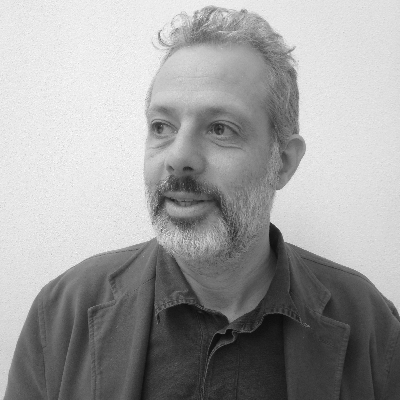“For some time we still have the chance to freely come to a decision, that is following a different flow from the one we went through in the past. We still can decide to align our intelligence to that of nature.”
(Joseph Beuys)
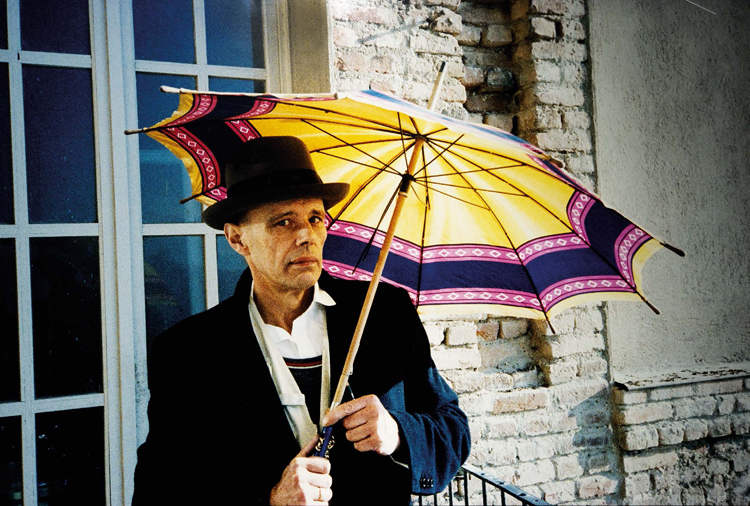 |
|
Umbrella, 1984. Multiplo For all the images of this article ©Buby Durini – Courtesy of Archivio Storico De Domizio Durini
|
Thirty years on from his death, Joseph Beuys’ words show how the German artist had embedded in his philosophy of aesthetics a close and systemic relationship with living matter.
Beuys is regarded as one of the leading artists of the post-war generation: his works are exhibited in the most prestigious museums around the world. Beuys was born in Germany in 1921; during the Second World War while on a mission in Crimea his plane was shot down. Beuys was miraculously rescued by a group of Tartar nomads who found him half frozen, wrapped him up in animal fat and felt and nursed him. Remembering that event twenty years later, Beuys put up a public performance, Der Chef, where he was wrapped up in black felt for eight hours.
Already in the 1950s, his artistic production stood out for the materials used: wood, rough and never polished, exposed metal welding. In 1961, he was asked to teach Monumental Sculpture at the Academy in Dusseldorf.
In 1967, his political and social commitment led him to found The German Student Party and to start a Free International University for creativity and interdisciplinary research, together with Heinrich Boll, Nobel Prize for Literature and creator of the important ecological institution carrying his name.
In the late 1970s, in Italy he developed the artistic operation, crucial in his works, called Defence of Nature. To go over the main stages of this operation and to remember its topicality, we spoke with Lucrezia De Domizio, an Italian expert working in the field of culture, who together with her husband Buby Durini (called by Beuys “his Italian brother”) worked and followed the German artist for fifteen years around the world.
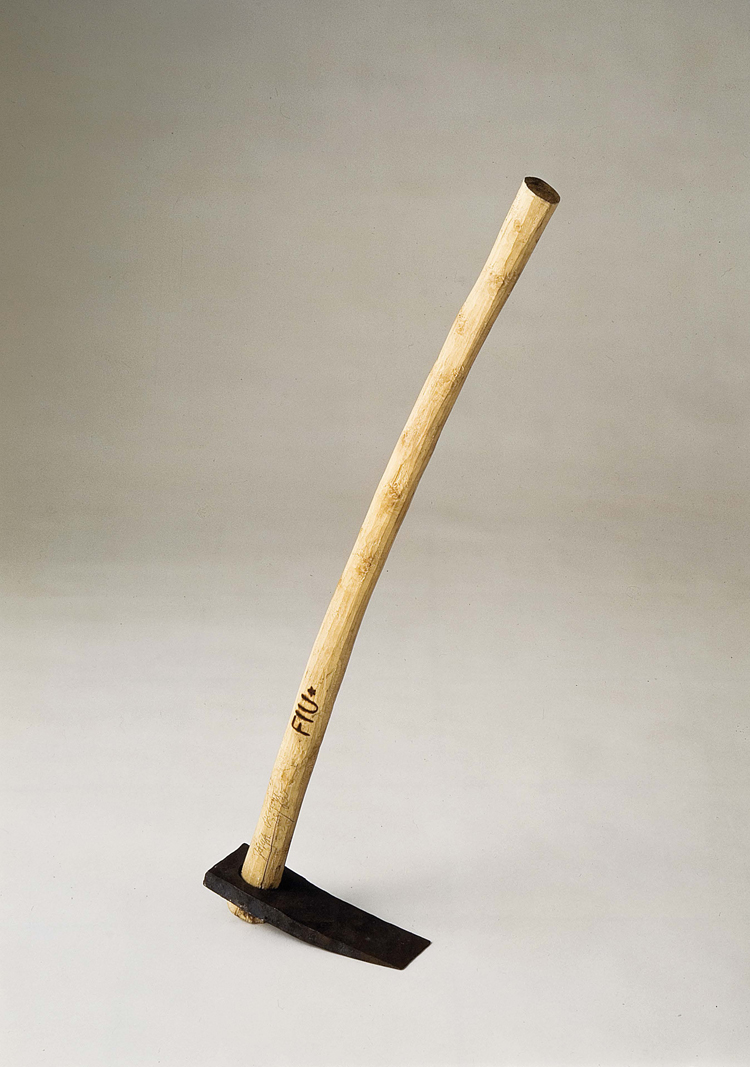 |
|
Hoe, 1978. Object in olive wood and cast iron
|
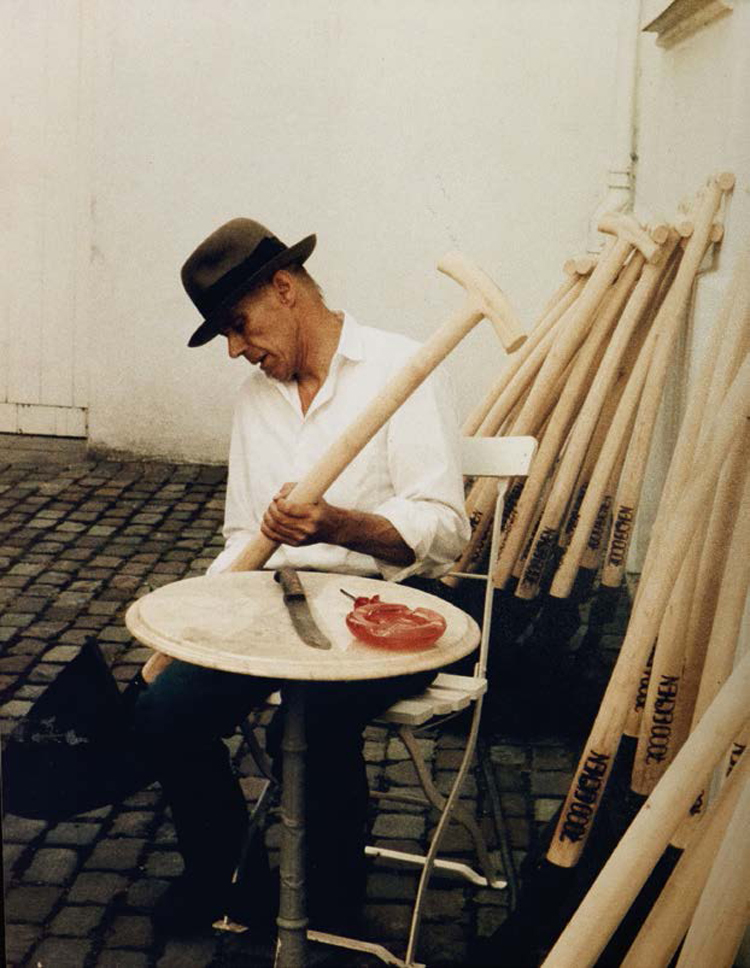 |
|
Beuys signs Shovels, Düsseldorf, 1983 |
Who was Joseph Beuys?
“Joseph Beuys is a man who, with his life and his works, represents the centrifugal and anti-traditionalist force that contemporary art has produced in recent decades.
An atypical figure in art movements – he has been included in minimalism, in Arte Povera, at first amongst performers and then in conceptual art but all in vain – Beuys managed to imbue himself with art and art with his person.
“This goes well beyond the never quenched idea of unity between art and life. Beuys, putting himself in his works, wants to highlight the anthropological power of all art. The need to speak, to communicate, to express oneself through any means, was totally embraced by Beuys all his life. For Beuys, to be an artist meant living with others, searching in a brotherly collaboration ‘that profound and basic understanding for what happens on Earth’ because all that happens in the world also happens within us. We cannot do away with talking to each other. And Beuys can only be born again and carry on living.”
An important period in Beuys’ artistic career was his work with natural living matter. What did it mean for him?
“First of all, we cannot forget that there is only one Earth. It supports all beings and it is our shared Home where we live and die.
“Defence of Nature was the last great masterpiece by Joseph Beuys, the forth slogan of the German master, a phenomenological unicum in world art. A mammoth operation carried out in Italy in the last fifteen years of his life in which the artist crystallized his rich artistic and spiritual journey with my constant collaboration and with Buby Durini’s magic lens in a context where the boundless plays a central inquiry role between the expansion of thought and human energy.
“In Beuys, the relationship with nature was always a constant theme. To this end, we must remember the ‘Una Fondazione per la Rinascita dell’Agricoltura,’ a debate that took place in Pescare in February 1978.
“Beuys’ love for the land started after his strong depression due to the war when he was a guest of his collector friends, Barons Hans e Franz Joseph van der Grinten, in their farm in Kranenburg. It was here that working the land – an element of generation and regeneration for any living being – that he started his career sketching archetypical human, animal and plant drawings. This early experience as an artist was replicated in Italy during the last fifteen years of his life working the land in the estate of Barons Durini in Defence of Humankind and Safeguard of Nature.
“Beuys’ drawings made in Kranenburg are a magnificent anthropological project completed in Italy.”
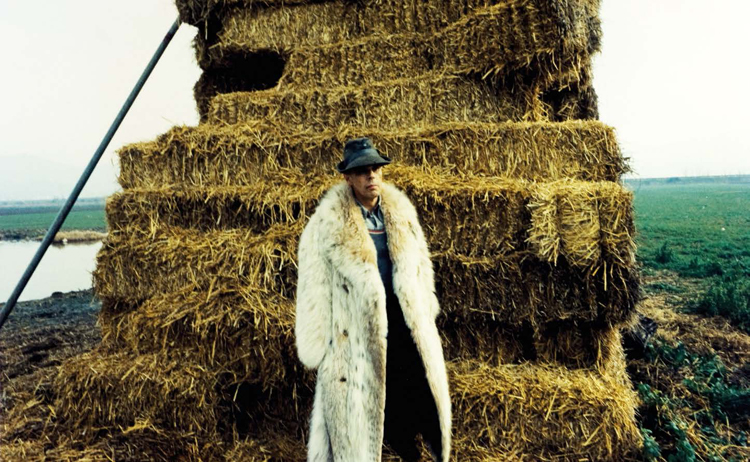 |
|
Beuys in Barone Durini’s Estate, 1976
|
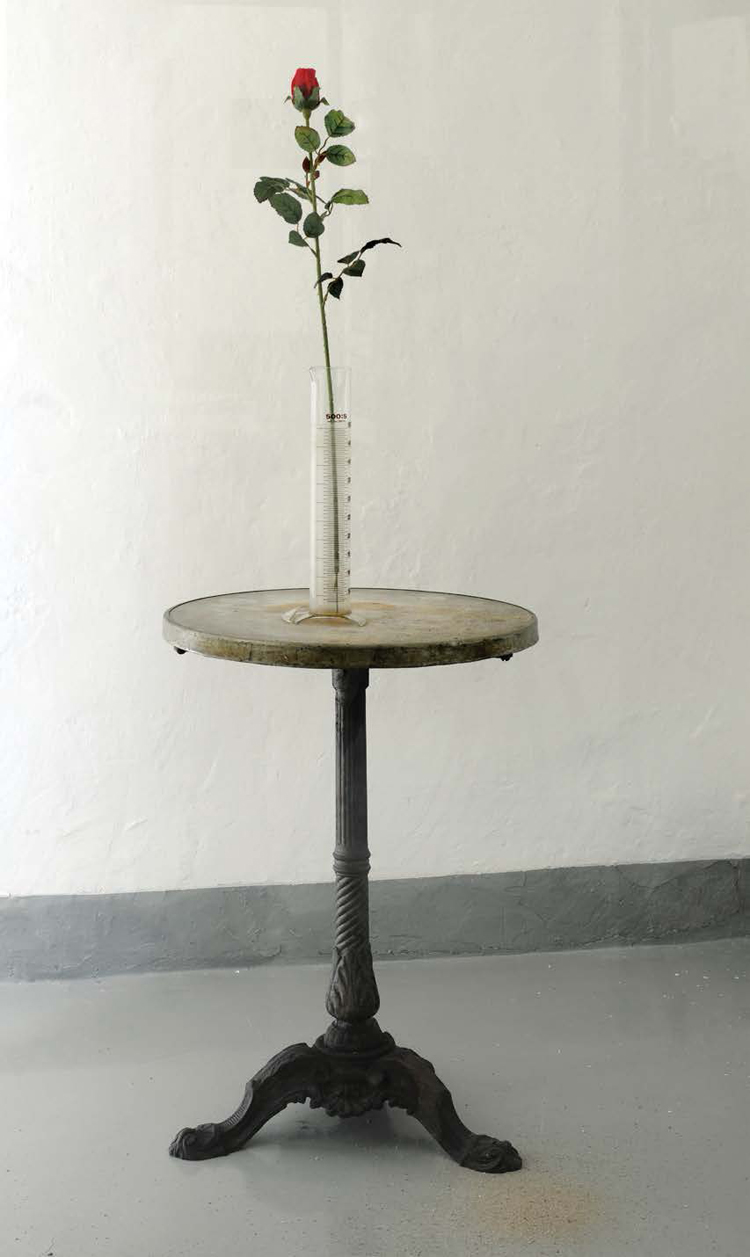 |
|
Table für direkte Demokratie, 1976
|
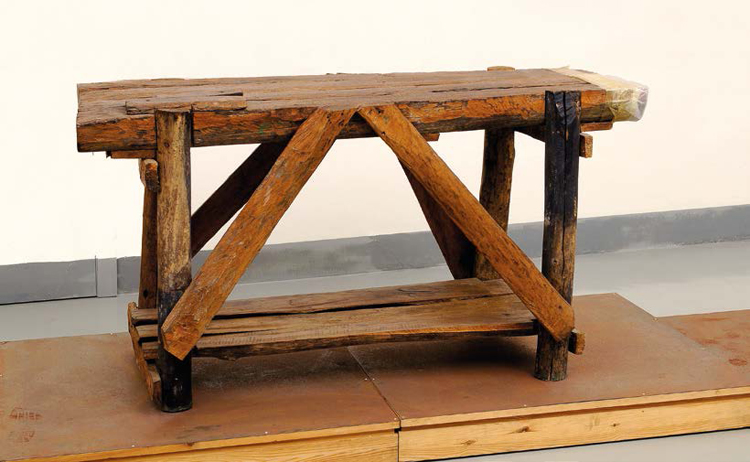 |
|
Diary of Seychelles, Table Charpentier, 1980
|
In Defence of Nature, Beuys highlighted the need to include human beings’ activities in the environmental context where they live. Nature must be protected because it is an integral part of humankind.
“Beuys’ Defence of Nature must not be interpreted only from an ecological point of view, but above all it must be read from an anthropological perspective: defence of humankind, of the individual, of creativity and human values, currently very topical themes all over planet Earth. It would be interesting to re-read the famous debate Defence of Nature that took place on 13th May 1984 in the small village of Bolognano where Beuys planted The First Italian Oak opposite his studio situated in the famous Paradise Plantation.
“In the final part of this famous debate, a very basic concept emerges: seeing nature’s intelligence as a counterpart that humans must recognized and respect, nature’s intelligence matches human intelligence. In nature, humans are equal to nature (see box).
“It is clear that humankind’s creativity, its production capacity at any level, can never disregard the fact that we can find a counterpart in nature. While we work in/with nature, nature works with/for our souls.”
In the work carried out in the Seychelles with you and your husband, Beuys planted two tree that have been growing over time. What is the meaning of such action today?
“It is in Italy that his idea of concrete utopia, thanks to the Seychelles-Bolognano-Kassel triad of plantations, comes to live in Utopia of Earth. The work of Beuys in the Seychelles is the beginning of a cyclonic art era. Art gives up any traditional cycle and starts to generate a new personal historiography. The individual becomes fertile humus where a new kind of social structure can sprout, characterized by an anthropological sedimentation that needs to be seen against the time realities of life and humans to benefit the entire human race.”
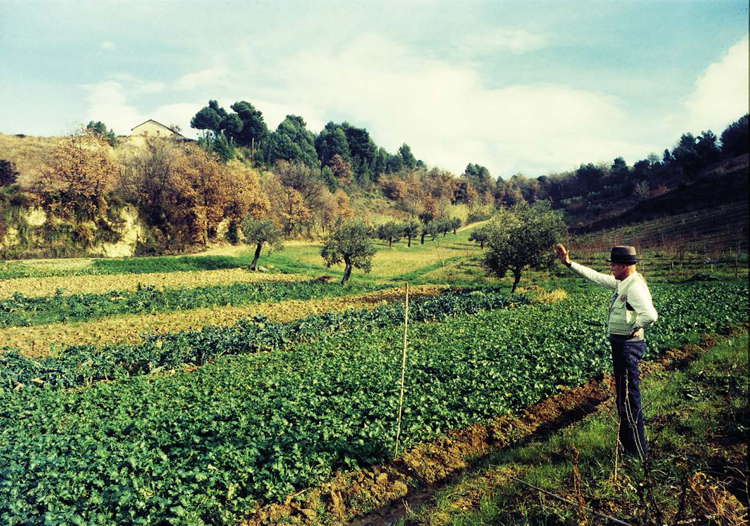 |
|
Organic ploughing of Barone Durini’s land, 1975
|
 |
|
F.I.U. Wine (Defense of Nature), 1983. Sculpture
|
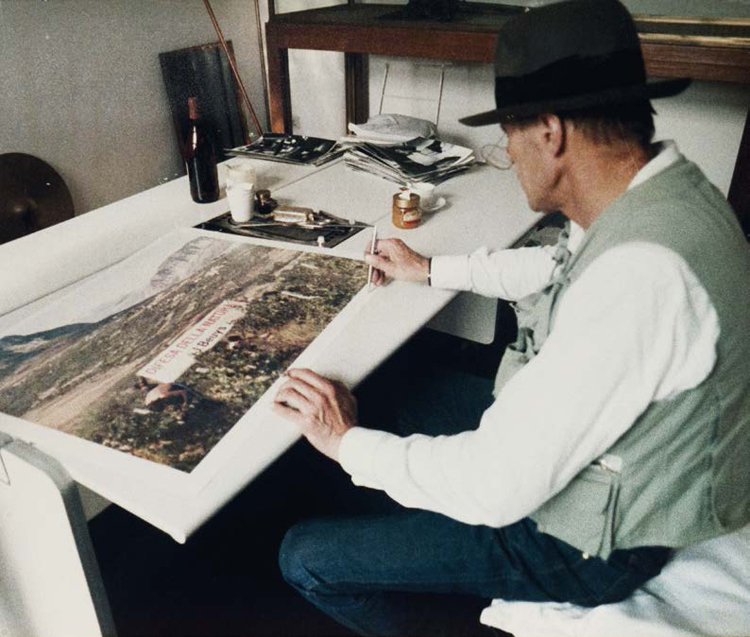 |
|
Beuys at Bolognano signing “Defense and Nature” graphic work and posters, 1984
|
You have lived in Paris for quite some time. Why?
“On 13th July 2011, after museums and the Italian government refused my private collection of 300 works by Beuys, I donated, through a magnificent exhibition, the entire collection of Defence of Nature to the Kunsthaus in Zurich (in 1993 I had already donated to the same Kunsthaus the majestic sculpture Olivestone). For the occasion, Electa Mondadori published a very important book, Beuys Voice, including all the works and thoughts of the German master and the Post Beuys.
“I have recently been appointed official curator for international contemporary art at the 2016 Industrial Art Biennial in Labin, Croatia, that will take place between 2nd March and 30th September. It includes a future project: The Underground City of Culture. It will be linked to the respect for the environment and will involved the whole habitat of the city of Labin, with an anti-traditionalist vision, putting into practice Beuysian concepts. I have invited 70 artists from all over the world, different generations, nationalities and explorations. It will be focussed on Beuys. I am sure it will be a success.”
From the last debate Defence of Nature between artist Marco Bagnoli and master Beuys in Bolognano on 13th May 1984
Marco Bagnoli: So, we think we are aware of the tree. Actually, it is the symbol of such awareness. So I ask Beuys, “But is this tree aware of us? If it is, it is the tree that plants us, from a material point of view, absorbing our awareness. If it is not, will it perhaps that dead god that returns to life in our conscience?”
Joseph Bueys: I thank you very much, Marco. I totally agree with what you just said. By doing this job, we plant trees, and trees plant us since we belong to each other and we must exist together. It is something that happens within a process that moves into two different directions at the same time. So, the tree is aware of us as we are aware of the tree. Therefore, it is extremely important that we must try to create or stimulate an interest in this kind of interdependence. If we do not respect the tree’s authority, either for its genius or intelligence, we will realize that the tree’s intelligence is so huge that it enables the tree to decide to make a telephone call to communicate the sad message on the human condition. The tree will call all animals, mountains, clouds and rivers; it will decide to talk to all geological forces, and if humanity fails, nature will take a terrible revenge, a very terrible revenge expressing nature’s intelligence and attempt to bring back humans to the light of reason through violence. If humans cannot break free from the cage of their stupidity, and if they refuse to show the ability to establish a collaborative relationship with nature, nature will resort to violence to force humans to take a different path. We have reached a point where we must take a decision. Either we do it or we do not. If we do not do it, we will have to face a series of terrible catastrophes that will hit every corner of the planet...”
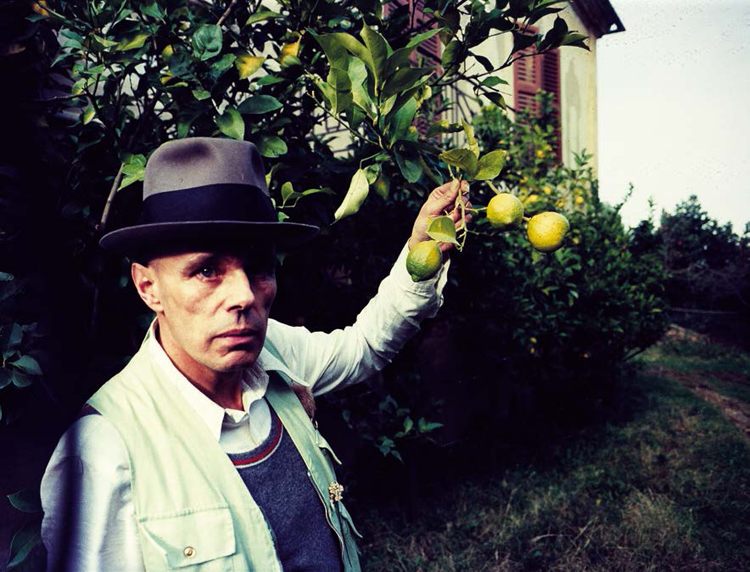 |
|
Beuys at Villa Durini, 1974
|
 |
|
Open wide! 1978. Serigraphy
|
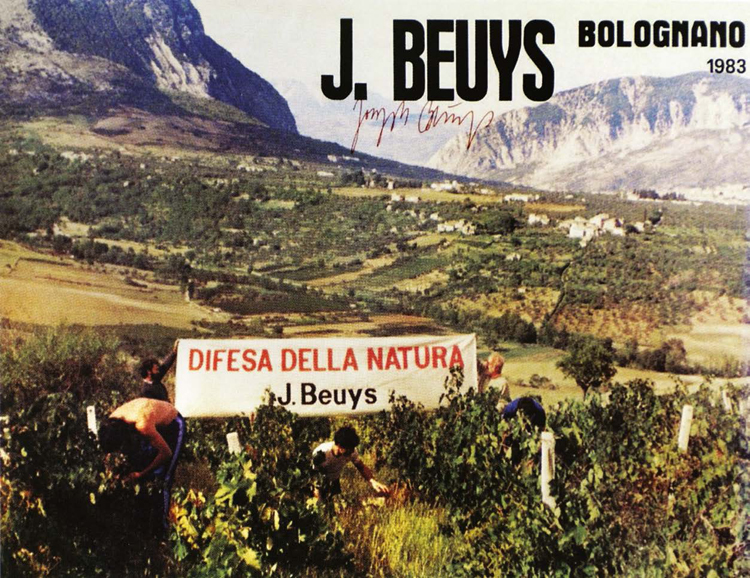 |
|
Defense of Nature, 1984. Lithograph
|
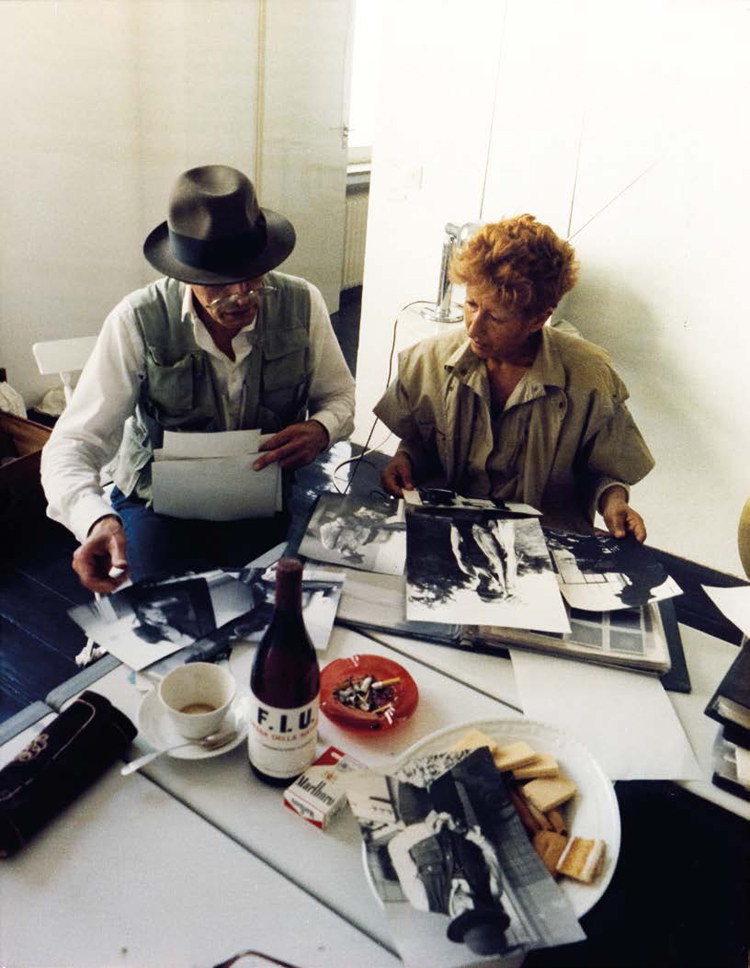 |
|
Beuys with Lucrezia De Domizio Durini, Beuys Studio, Düsseldorf, 1983
|
IAB01 – Industrial Art Biennial, www.industrialartbiennale.eu


